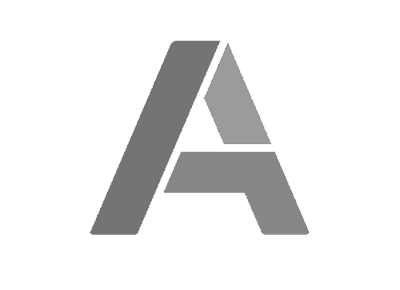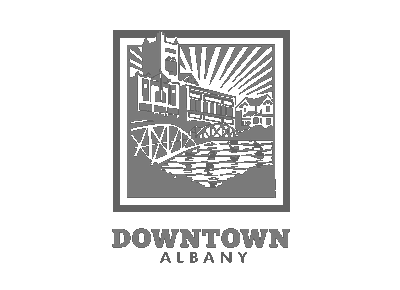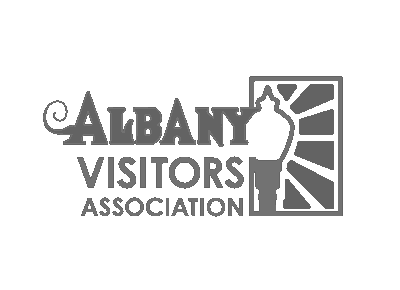The City of Albany sampled for 90 regulated contaminants on a continuous, daily, monthly, quarterly, annual, or reduced monitoring program in 2022. The federal Environmental Protection Agency requires disclosure of any regulated contaminants that were detected in the Albany-Millersburg public water system. Where allowed to monitor less often than once a year, the City of Albany is required to report contaminants detected within the last five years.
At no time were any of the detected contaminants found to be above the maximum level allowed in drinking water (MCL).
Regulated Contaminants Detected in 2022
| Contaminant | Maximum Level Reported | Range of Detections | MCL | Unit of Measurement | Recommended Health Goal (MCLG) | Major Sources | Does our water meet the standard? | |
|---|---|---|---|---|---|---|---|---|
| Microbial | Turbidity Vine Street WTP1 |
0.12 | 0.03 - 0.12 | 0.15 | NTU (TT) |
N/A | Soil runoff | Yes |
| Turbidity AM Joint WTP1 |
0.16 | 0.01 - 0.16 | 1 | NTU (TT) |
N/A | Soil runoff | Yes | |
| Cryptosporidium Vine Street WTP2 |
0.016 | ND - 0.01 | N/A | Oocyst/L | N/A | Human and animal waste | Yes | |
| Chemicals | Fluoride3 | 0.77 | 0.19 - 1.13 | 4 | PPM | 4 | Additive which promotes strong teeth | Yes |
| Total Organic Carbon (TOC)3 | 1.13 | 0.75-1.51 | N/A | PPM (TT) |
N/A | Naturally present in the environment | Yes | |
| Combined Radium 226/228 | 2.49 | ND - 2.49 | 5 | pCi/L | 0 | Erosion of natural deposits | Yes |
| Contaminant | Maximum Level Reported | Range of Detections | MCL | Unit of Measurement | Recommended Health Goal (MCLG) | Major Sources | Does our water meet the standard? | |
|---|---|---|---|---|---|---|---|---|
| Chemicals | Chlorine (Free Cl2 Residual)3 |
1.12 | 0.10 - 1.12 | 4 (MRDL) | PPM | 4 (MRDLG) |
Water additive used to control microbes | Yes |
| Total Trihalomethanes (TTHM)4 | 52 | 19.1 - 66.3 | 80 | PPB | N/A | Byproduct of drinking water disinfection | Yes | |
| Haloacetic Acids (HAA5)4 | 20 | 10.2 - 22.4 | 60 | PPB | N/A | Byproduct of drinking water disinfection | Yes | |
| Lead5 | 10 | 0 - 10.0 | 15 (AL) |
PPB | 0 | Corrosion of household plumbing | Yes | |
| Copper5 | 0.03 | 0 - 0.03 | 1.3 (AL) |
PPM | 1.3 | Corrosion of household plumbing | Yes |
| Contaminant | Maximum Level Reported | Range of Detections | MCL | Unit of Measurement | Recommended Health Goal (MCLG) | Major Sources | Does our water meet the standard? | |
|---|---|---|---|---|---|---|---|---|
| Chemicals | Chlorine (Free Cl2 Residual)3 |
0.97 | 0.08 - 0.97 | 4 (MRDL) | PPM | 4 (MRDLG) |
Water additive used to control microbes | Yes |
| Total Trihalomethanes (TTHM)4 | 65 | 24.7 - 70.1 | 80 | PPB | N/A | Byproduct of drinking water disinfection | Yes | |
| Haloacetic Acids (HAA5)4 | 25 | 15.0 - 21.3 | 60 | PPB | N/A | Byproduct of drinking water disinfection | Yes | |
| Lead6 | 1.3 | 0 - 1.3 | 15 (AL) |
PPB | 0 | Corrosion of household plumbing | Yes | |
| Copper6 | 0.03 | 0 - 0.03 | 1.3 (AL) | PPM | 1.3 | Corrosion of household plumbing | Yes |
Definitions
Action Level (AL): The concentration of a contaminant which, if exceeded, triggers treatment or other requirements that a water system must follow.
Maximum Contaminant Level (MCL): The highest level of a contaminant that is allowed in drinking water. MCLs are set as close to the MCLGs as feasible using the best available treatment technology.
Maximum Contaminant Level Goal (MCLG): The level of a contaminant in drinking water below which there is no known or expected risk to health. MCLGs allow for a margin of safety.
Maximum Residual Disinfectant Level (MRDL): The highest level of a disinfectant allowed in drinking water. There is convincing evidence that addition of a disinfectant is necessary for control of microbial contaminants.
Maximum Residual Disinfectant Level Goal (MRDLG): The level of a drinking water disinfectant below which there is no known or expected risk to health. MRDLGs do not reflect the benefits of the use of disinfectants to control microbial contamination.
Nephelometric Turbidity Units (NTU): The units of turbidity from an instrument that measures the propensity of particles to scatter a light beam focused on them.
Parts Per Million (ppm): One part per million corresponds to one penny in $10,000 or approximately one minute in two years. One part per million is equal to 1,000 parts per billion or one milligram/liter (mg/L).
Part Per Billion (ppb): One part per billion corresponds to one penny in $10,000,000 or approximately one minute in 2,000 years. One part per billion is equal to one microgram/liter (ug/L).
Picocuries per liter (pCi/l): A measure of radioactivity.
Treatment Technique (TT): A required process intended to reduce the level of a contaminant in drinking water.
Notes
N/A = Not Applicable
1 Turbidity is a measure of the cloudiness of the water. Turbidity is monitored because it is a good indicator of the effectiveness of Albany's filtration system at removing contamination. Albany monitors turbidity at each filter on a continuous basis and records the value every 15 minutes. The highest single measurement detected is reported. For compliance, 95% of monthly samples must be below the MCL. If the Maximum Level Reported for turbidity exceeds the MCL, the percent of monthly samples that met the turbidity limits for our filtration technology is also reported.
2 Cyrptosporidium is a protozoan that can be found in surface water sources, generally from human or animal waste contamination. The City completed the second round of cryptosporidium sampling between October 2015 and September 2017, as required by the Long-Term 2 Enhanced Surface Water Treatment Rule, to determine the level of cryptosporidium in the raw water (before treatment) at both the Vine Street Water Treatment Plant and the Albany-Millersburg Joint Water Treatment Plant. The samples were analyzed for the number of oocysts, which is the form the organism takes when in the environment, per liter of water. The highest arithmetic average of all sample concentrations in any 12 consecutive-month period is calculated for each WTP. That number is used to determine if additional treatment is necessary to reduce the risk of cryptosporidium contamination in our drinking water. Cryptosporidium was not detected in any samples at the AM Joint WTP making the arithmetic average also non-detect. The highest arithmetic average for the Vine Street WTP was 0.016 oocysts/L, which is below the 0.075 oocysts/L threshold. Therefore, no additional treatment is required for either the AM Joint WTP or the Vine Street WTP.
3 Compliance levels reported for fluoride and total organic carbon (TOC) are calculated by averaging the sample results at each plant over a running 12-month period. The compliance level reported for free chlorine is calculated by averaging the sample results from all sampling sites over a running 12-month period. The range is determined by individual tests at single sites.
4 The detected level of TTHMs and HAA5s is the highest running annual average at any of the individual monitoring locations and the range of all monitoring locations.
5 A total of thirty homes in the Albany distribution system were tested for lead and copper at the customer’s tap in August 2020. None of the homes exceeded the action level for lead or copper. All home owners were notified of their test results. Lead and copper standards are met if at least 90 percent of the samples have lead levels less than or equal to 15 ppb and copper levels less than or equal to 1.3 ppm. The 90th percentile was 1.4 ppb for lead and 0.017 ppm for copper in the Albany distribution system. The 90th percentile is reported to the Oregon Health Authority. The next sample set will be collected in summer 2023.
6 Ten homes in the Millersburg distribution system were tested for lead and copper at the customer’s tap in August 2020. None of the homes exceeded the action level for lead or copper. All home owners were notified of their test results. Lead and copper standards are met if at least 90 percent of the samples have lead levels less than or equal to 15 ppb and copper levels less than or equal to 1.3 ppm. The 90th percentile was 1.1 ppb for lead and 0.025 ppm for copper in the Millersburg distribution system. The 90th percentile is reported to the Oregon Health Authority. The next sample set will be collected in summer 2023.


